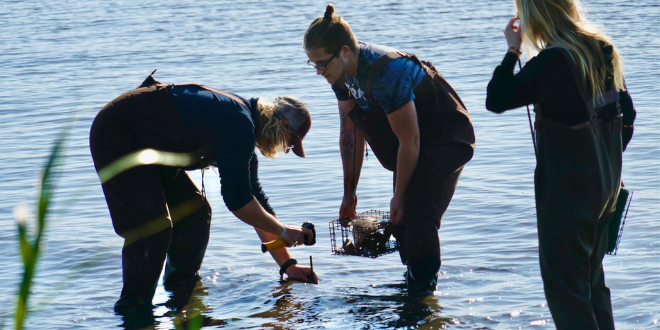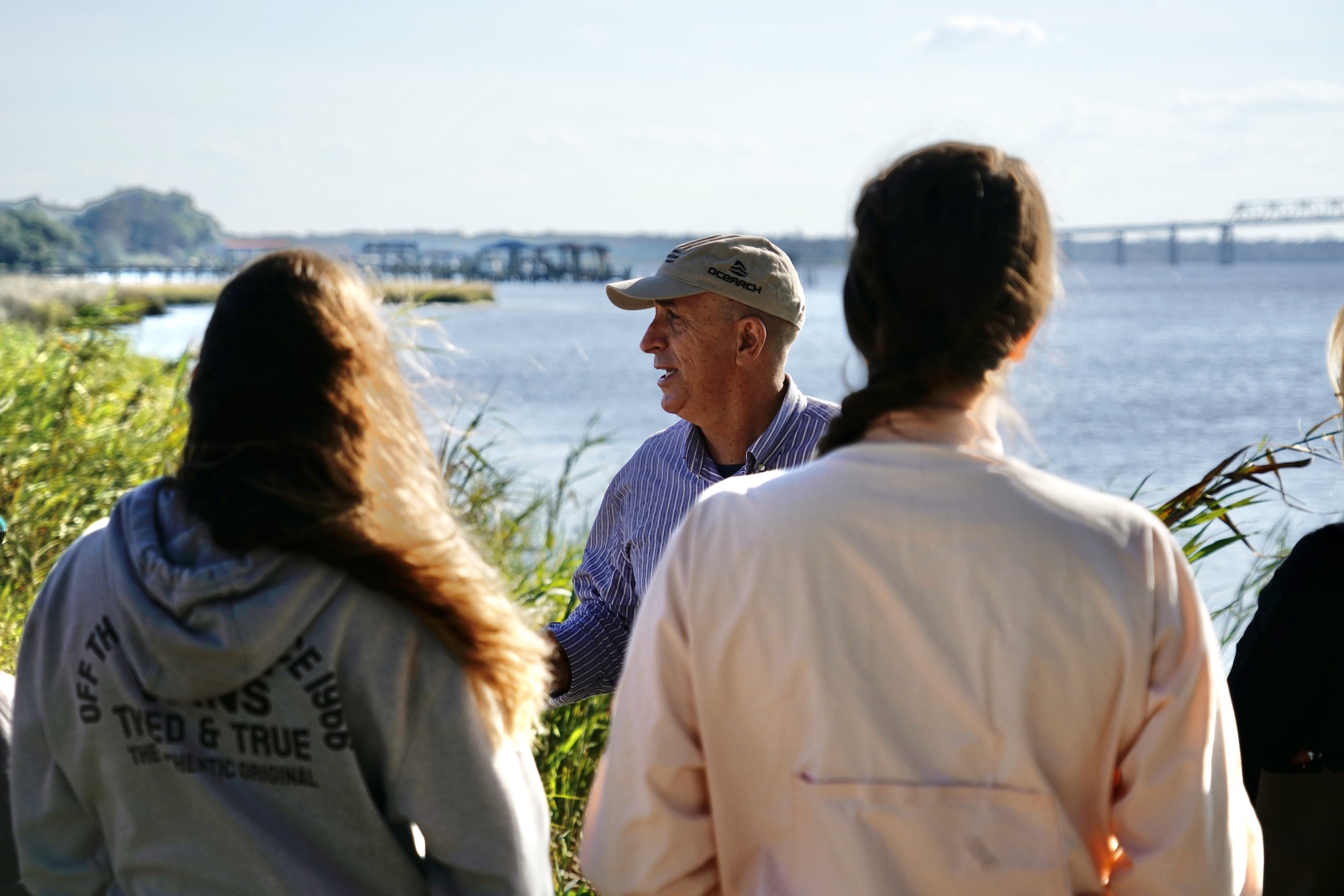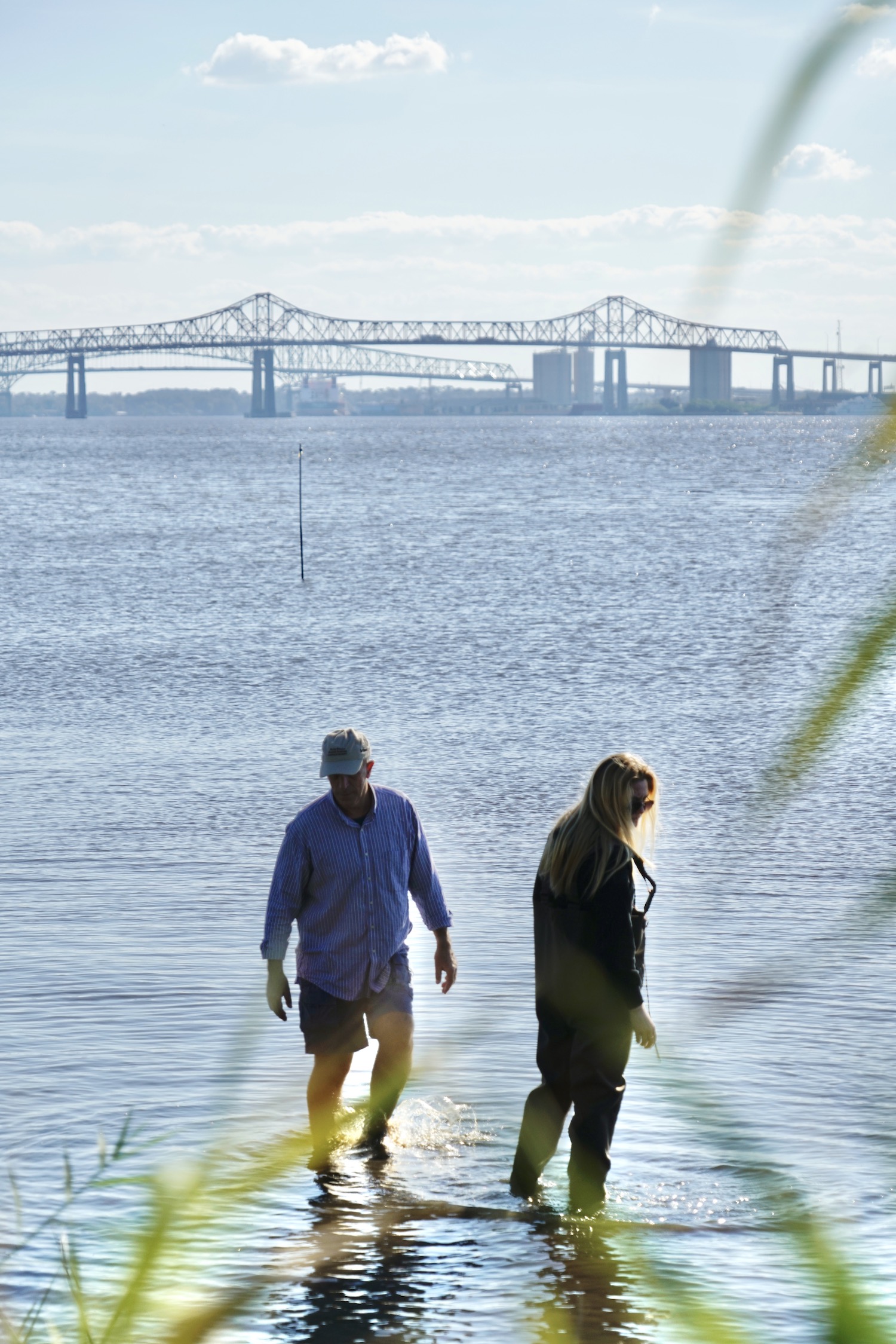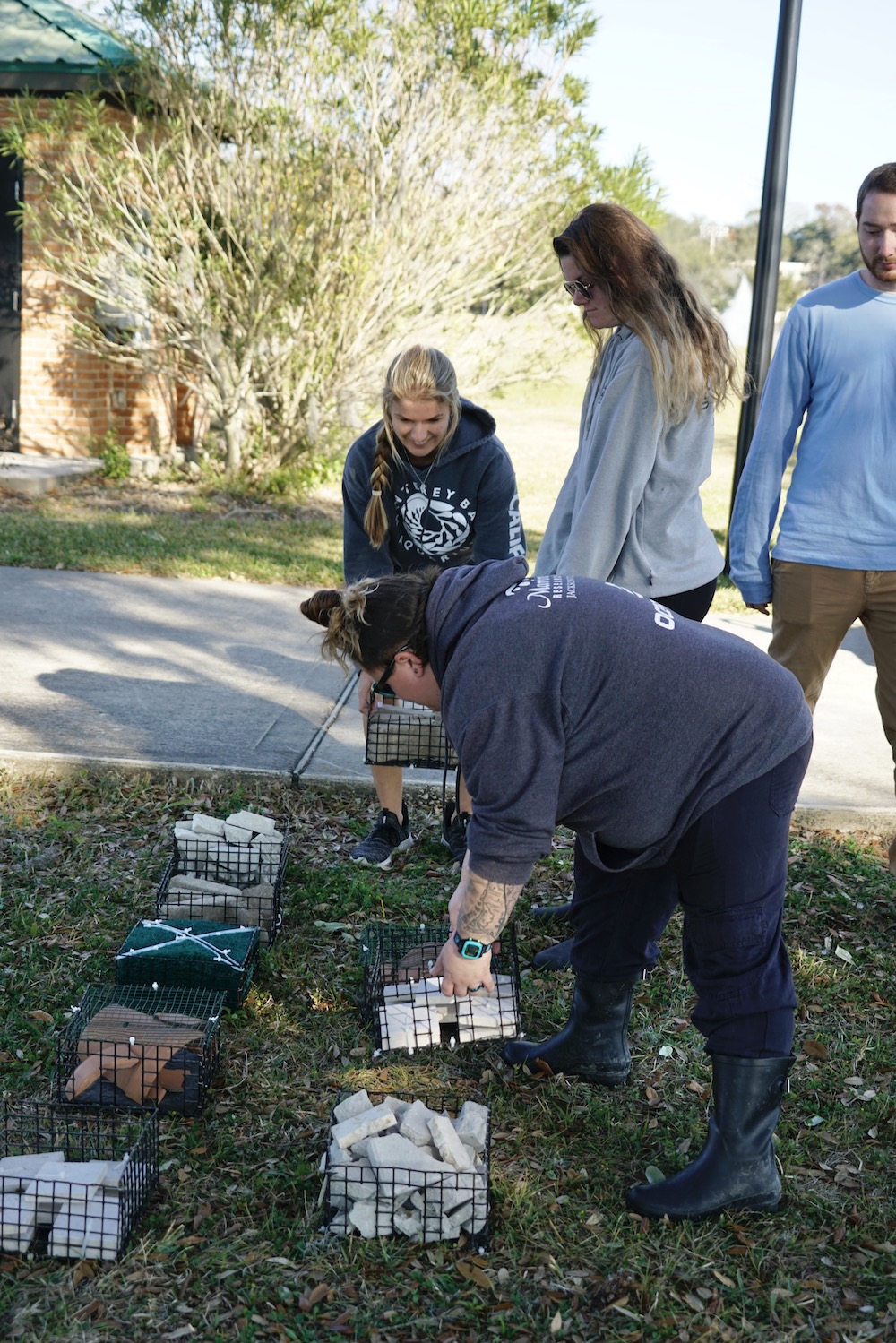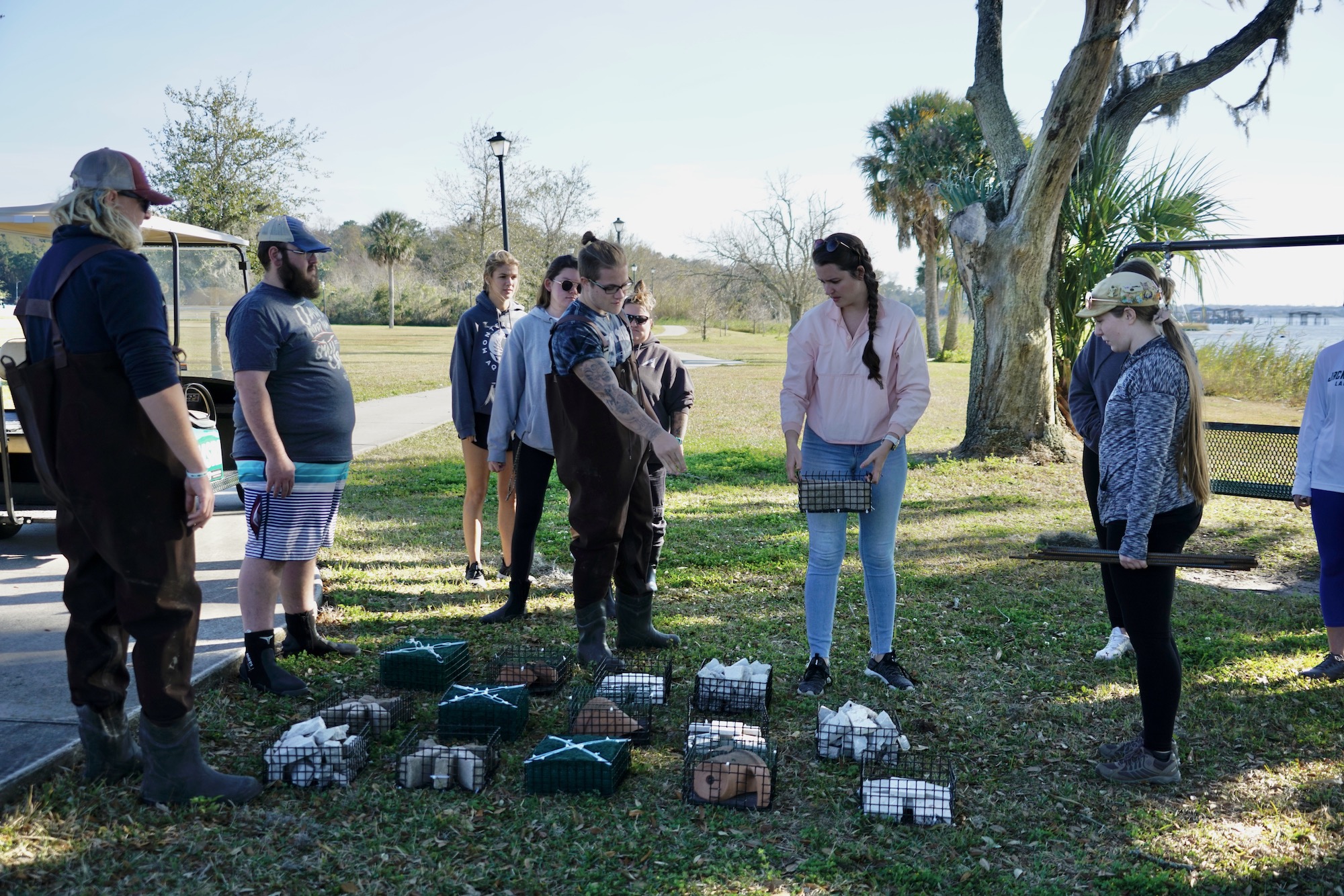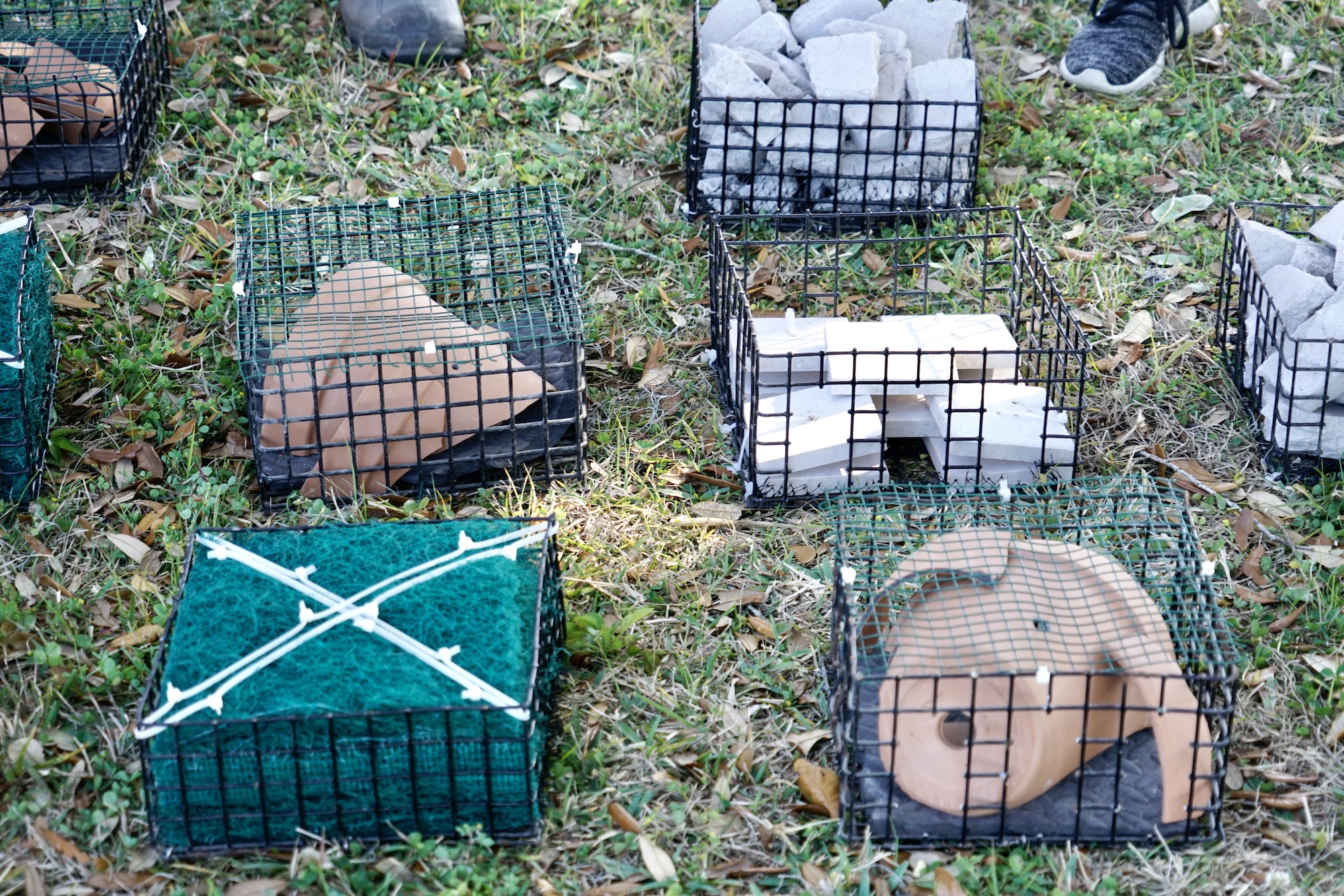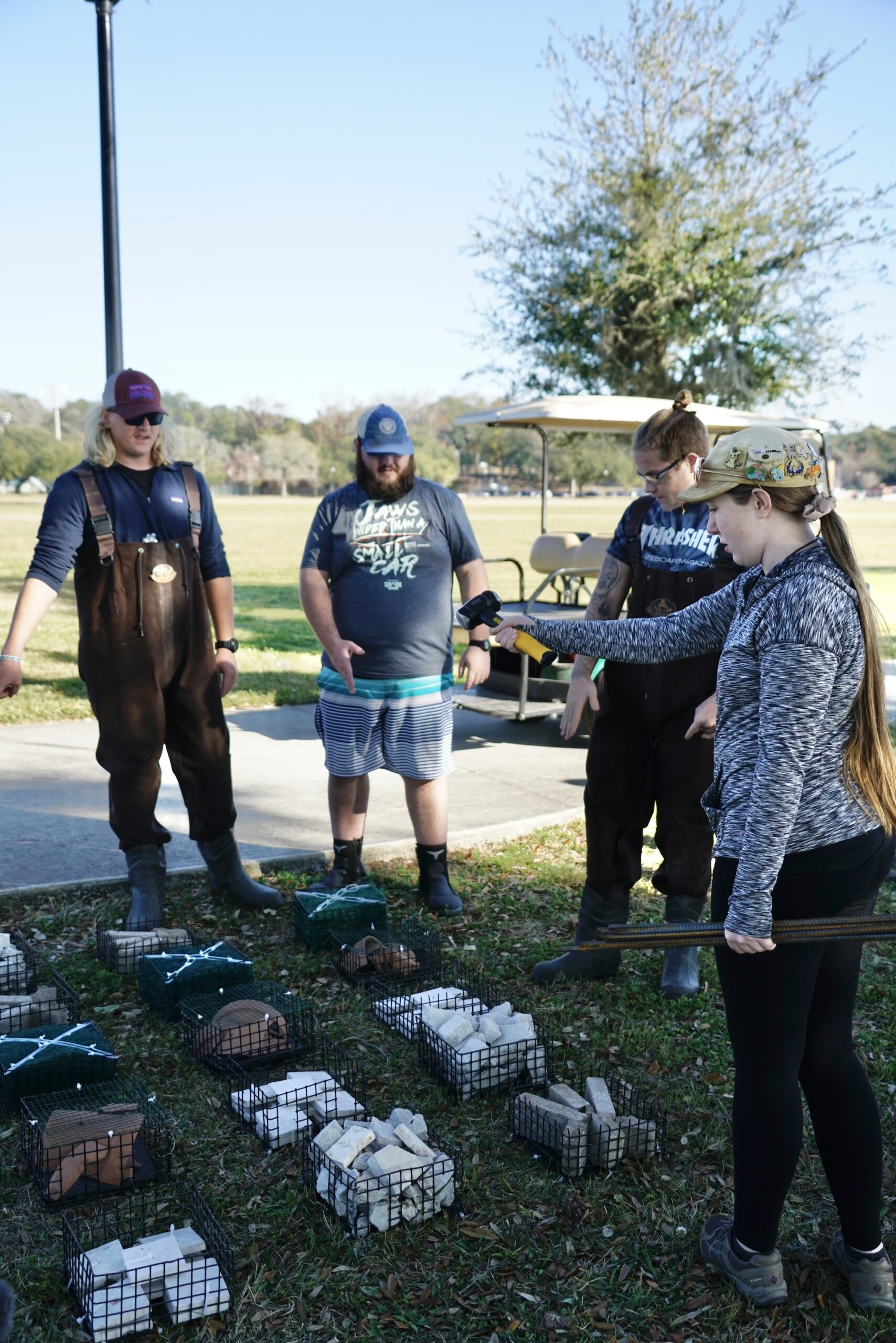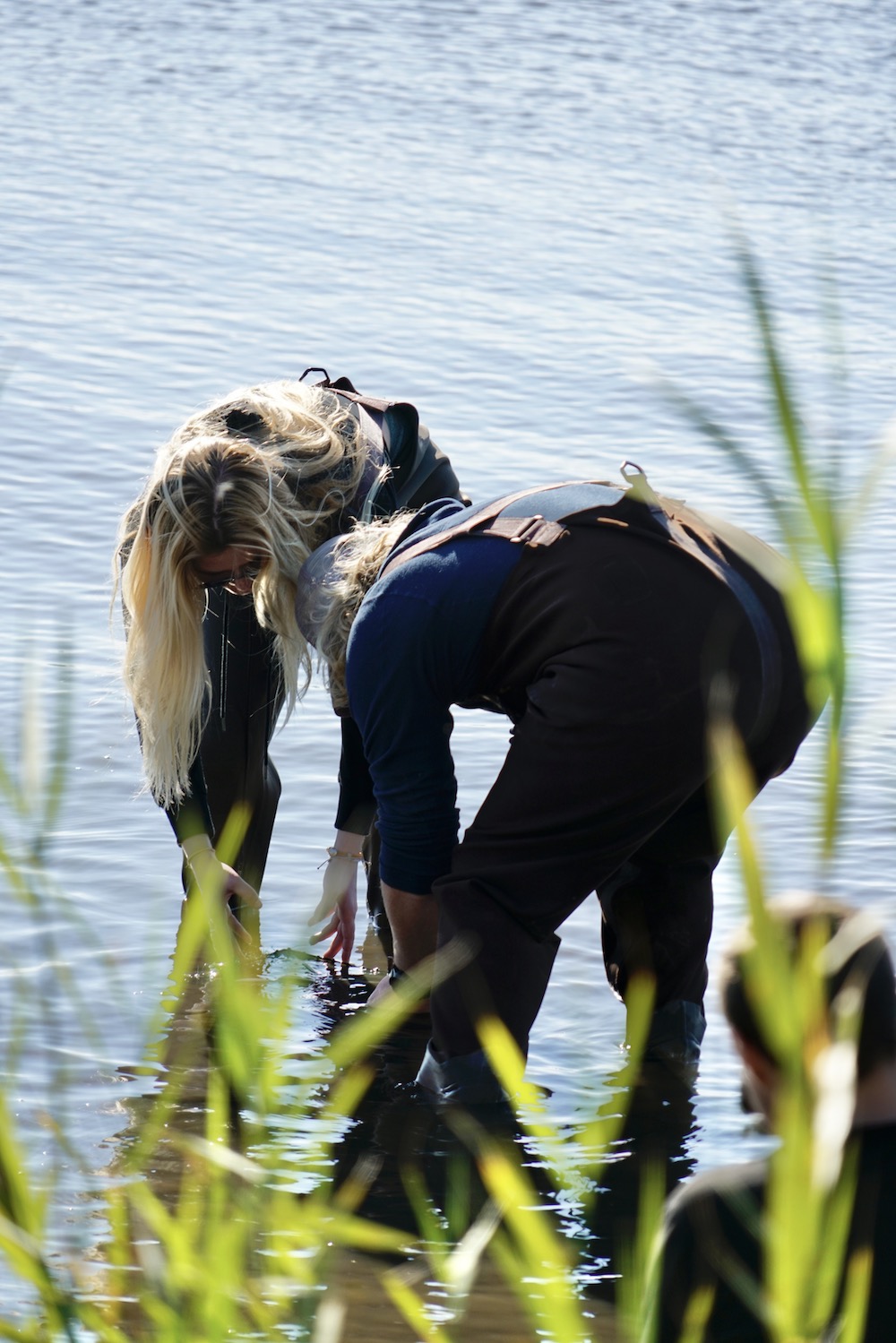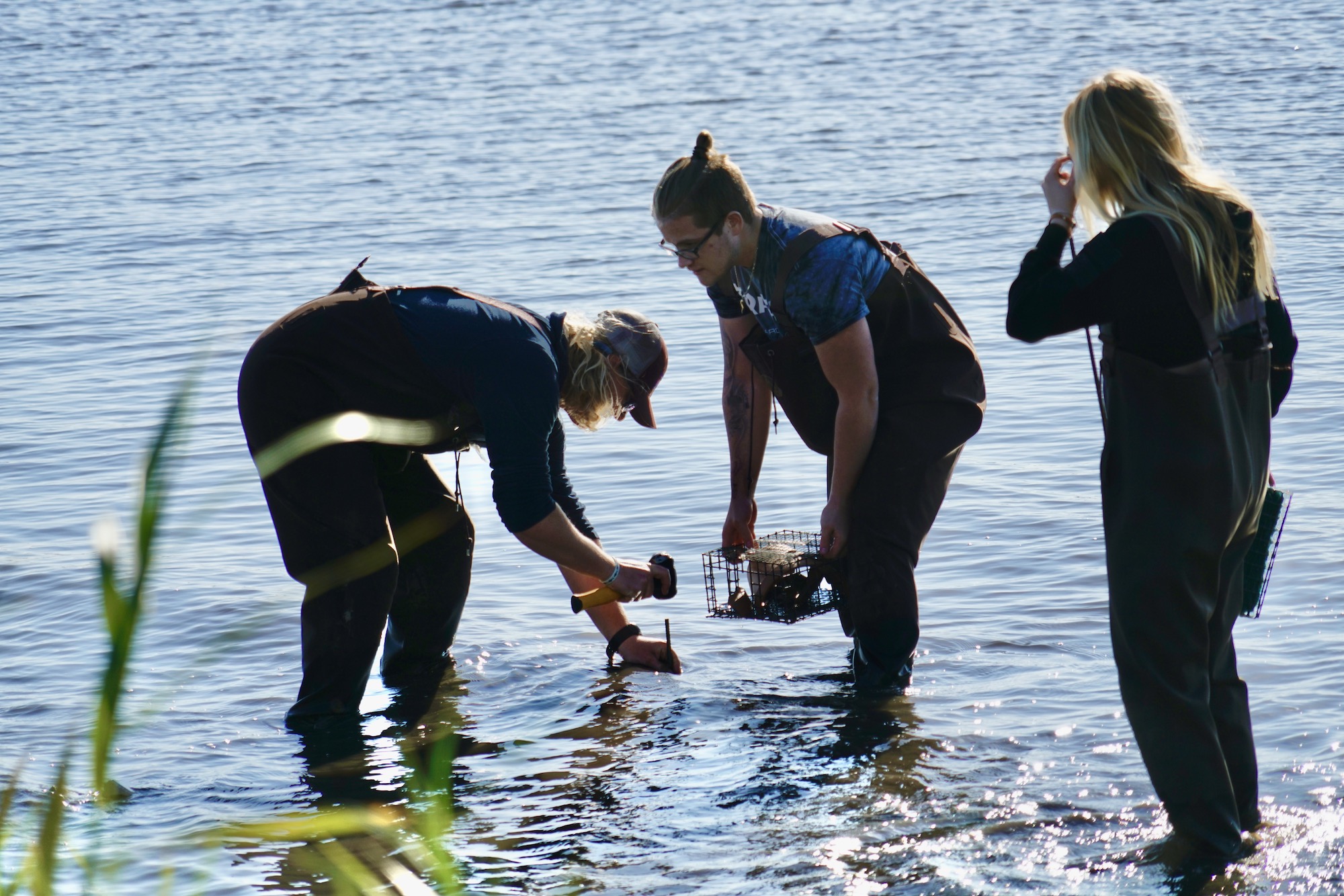With small artificial reefs in hand, Biology Professor Dr. Dan McCarthy and his students waded through the tall grassy banks and into the St. Johns River just outside the Marine Science Research Institute.
As Dr. McCarthy supervised, marine science students placed the reefs several yards into the river, and secured them in place with steel rods.
The project, part of a cross-listed graduate and undergraduate class on reef ecology and management, is designed to see what organisms in the river are attracted to the shelters and what type of shelter they prefer.
Marine Science graduate student Gabrielle Conrad said she and her classmates will be looking for crabs, shrimps, worms, small fish or other organisms in the shelters once the experiment is complete. The shelters will be pulled from the water toward the end of the semester, she said.
The shelters are made of small baskets with various materials including garden pots, concrete blocks, pond filters and bricks.
The baskets will also help protect the river banks from erosion.
“We hope to see a lot of organisms, we want to be able to study them, analyze them and identify them,” Conrad said. “Ultimately, we want to grow our knowledge about what’s going on at our coastline at JU.”
While the project is not part of a larger study yet, Dr. McCarthy said based on the findings, it could be used in larger local or regional studies done on the St. Johns River.
“The results could give insight into how manipulating size and shape of the reef may select for specific communities of organisms,” Dr. McCarthy said. “This is important because small organisms like these may ultimately attract larger organisms, some of which are commercially or recreationally important, like red drum or spotted sea trout.”
Students in McCarthy’s reef ecology and management course helped design the study. It serves as a hands-on learning experience as students go on to formulate their own projects and studies.
“I hope the students gain knowledge on how to set up, collect data, and interpret results from field experiments they help to develop,” McCarthy said. “I also hope they gain an appreciation for what ideally can be involved in developing artificial reefs in areas with oysters or corals.”
 Wave Magazine Online Jacksonville University News Hub
Wave Magazine Online Jacksonville University News Hub
